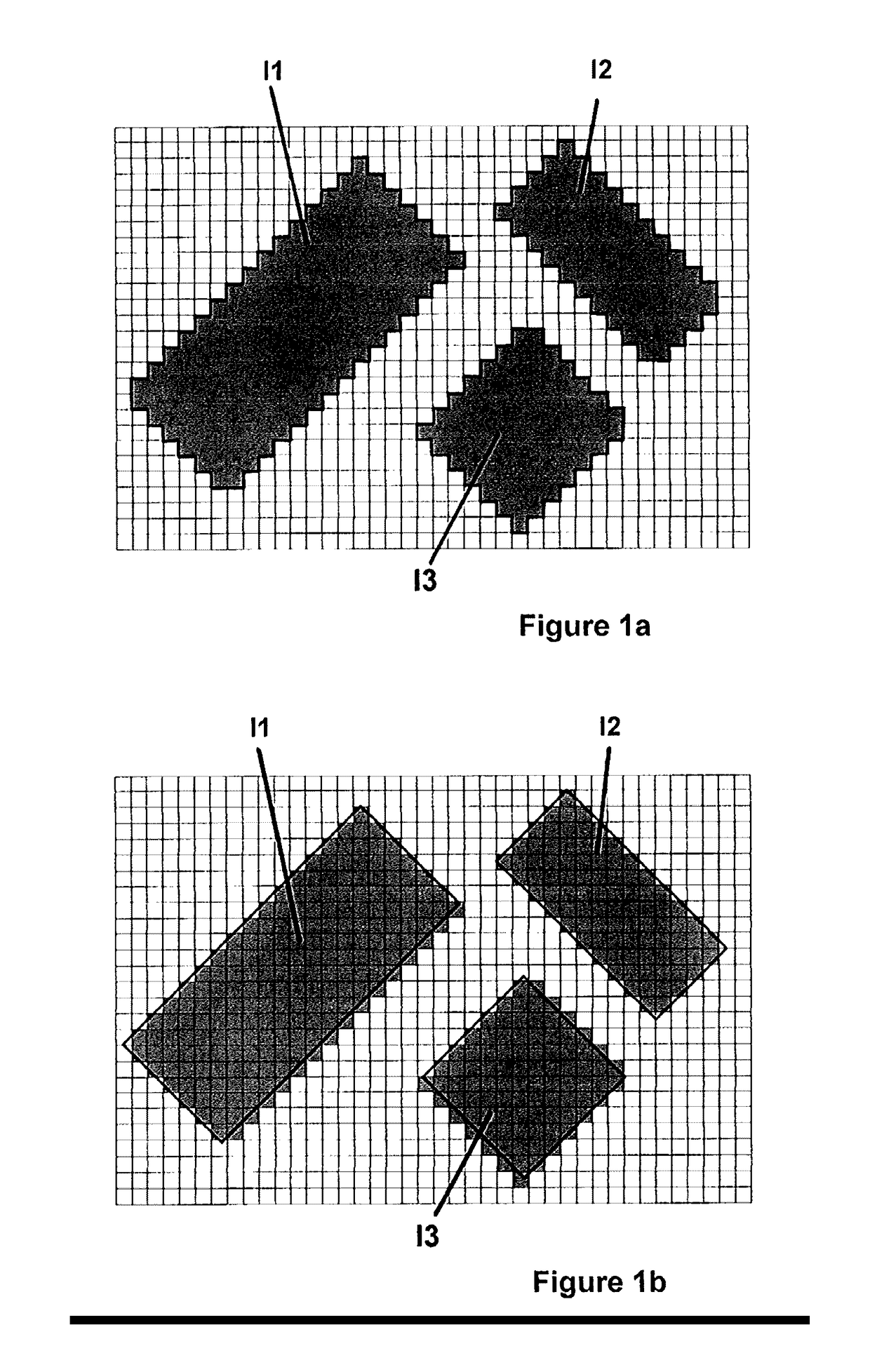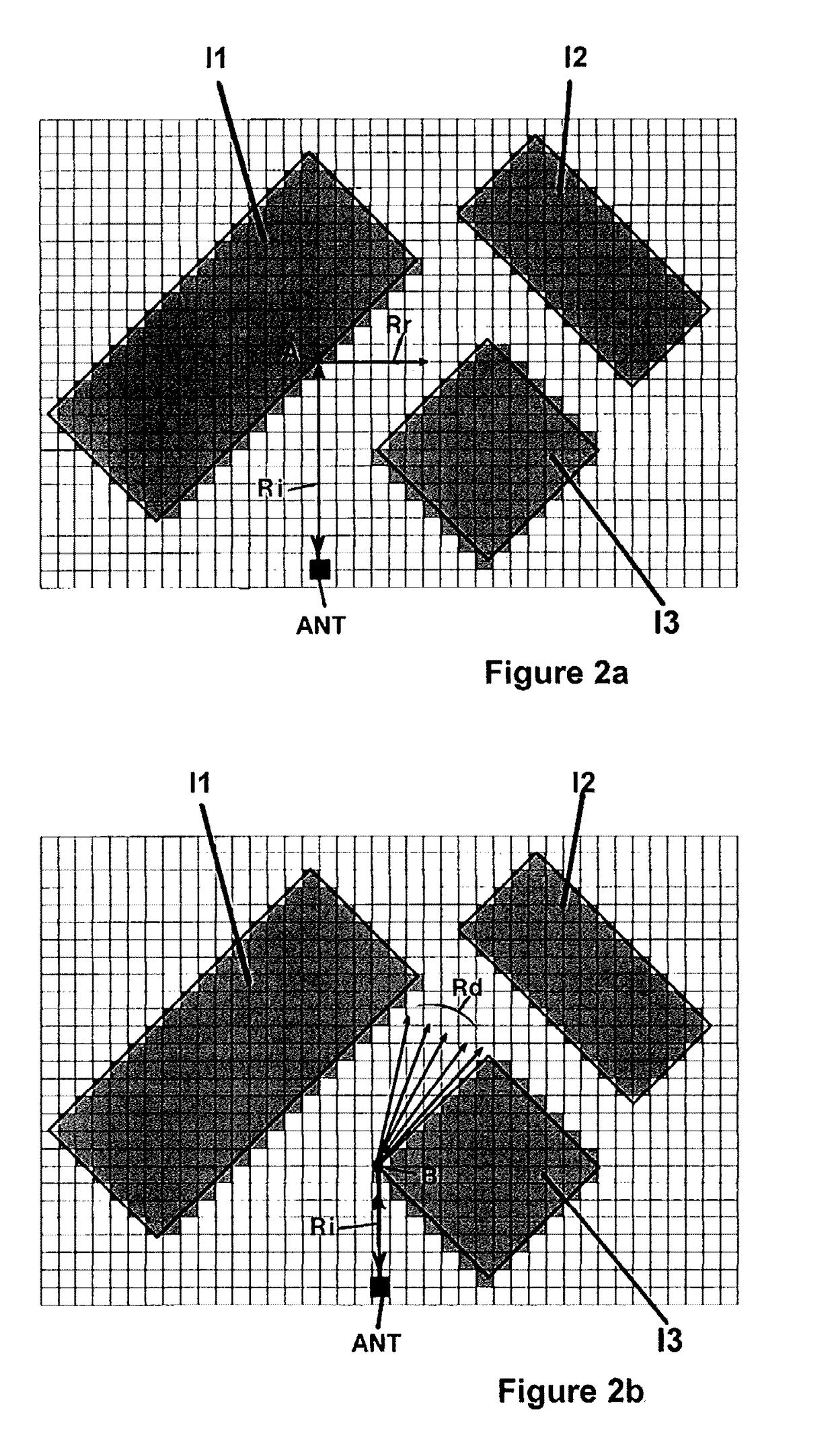Method for predicting the radio field level and/or the duration of propagation of cellular telephone networks using high-resolution terrain databases
a technology of high-resolution terrain databases and radio field levels, applied in network planning, electrical equipment, wireless communication, etc., can solve the problems of increasing the size of the cell, affecting the propagation speed of cellular telephone networks, and high cost of vector databases to produce and maintain. , to achieve the effect of accelerating the calculation
- Summary
- Abstract
- Description
- Claims
- Application Information
AI Technical Summary
Benefits of technology
Problems solved by technology
Method used
Image
Examples
first embodiment
[0035]FIGS. 1a and 1b diagrammatically show an example of a step of the method with preprocessing according to the invention for which a simple configuration of obstacles in the urban environment is proposed, obstacles towards which the fictitious incident rays will be launched.
[0036]In this first embodiment, two steps are described to effectively implement the method for predicting the radio field level and / or the duration of radio propagation. A first step consists of a specific and single vectorization preprocessing of the contours of obstacles applied to the raster bases to linearize the contours of obstacles encountered by taking into account only the objects that represent the obstacles and as such retrieve said actual contours of obstacles. This preprocessing is carried out in a unique manner different from conventional methods, since the type of result is known, for example it is obvious that buildings practically all have vertical façades. In this way, knowing the method of...
second embodiment
[0056]Consequently, all of the steps of the second embodiment remain practically identical, with the only modification being the useful saving to memory of the results of the calculations proper to the immediate environment of an already analyzed point of impact and therefore of the information relating to the types of obstacles and the angles formed by said obstacles encountered. The raster database is thus linearized from one to the next.
[0057]In this way, thanks to this alternative it is permitted to save in the form of data grid the vector data calculated in the immediate environment of the point of impact, i.e. around said point of impact, so that the latter, once saved, can subsequently be used again when another launched ray encounters the immediate environment of the already analyzed point of impact. As such, the initial base of objects containing vector information is advantageously enriched as the execution unfolds of the ray-launching calculations, which has for main adva...
PUM
 Login to View More
Login to View More Abstract
Description
Claims
Application Information
 Login to View More
Login to View More - R&D
- Intellectual Property
- Life Sciences
- Materials
- Tech Scout
- Unparalleled Data Quality
- Higher Quality Content
- 60% Fewer Hallucinations
Browse by: Latest US Patents, China's latest patents, Technical Efficacy Thesaurus, Application Domain, Technology Topic, Popular Technical Reports.
© 2025 PatSnap. All rights reserved.Legal|Privacy policy|Modern Slavery Act Transparency Statement|Sitemap|About US| Contact US: help@patsnap.com



